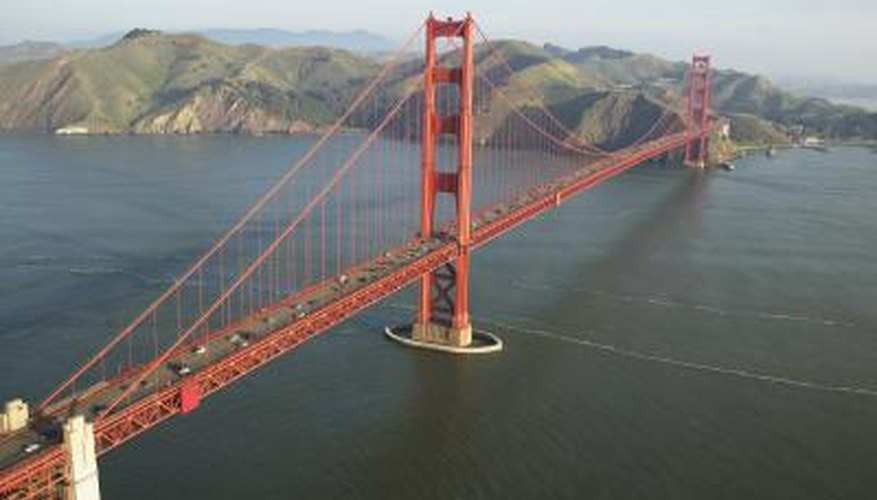Suspension bridges are made up of towers and a bridge deck that is supported by cables. Some of the longest in the United States include the Verrazano Narrows Bridge, which spans 1,298 meters to connect Brooklyn to Staten Island in New York City; the Golden Gate Bridge, spanning 1,280 meters in San Francisco; and the Mackinac Bridge, which spans 1,158 meters to connect Michigan’s upper and lower peninsulas.
Waterways
A definite advantage of suspension bridges is their ability to be used over waterways. The bridges spans, especially the central one, can be very long, making them ideal for large bodies of waters or canyons. A suspension bridge’s base can also be very tall, allowing ships or other water vessels to easily pass beneath the bridge.
Construction
Suspension bridges are built by constructing the bases and then working on the bridge from the top. No one needs to dangerously dangle beneath the bridge as it’s being constructed. On the downside, suspension bridges that span wide or deep waterways require workers who dive to the depths of the waterway to set up the supports on the waterway floor.
Durability
Suspension bridges are made to sway with the wind and a fairly flexible. They are also better at withstanding earthquakes than bridges with a more rigid construction. Because of their lightweight nature, however, they may sway too dangerously in extreme conditions and be unsafe to use until the extreme weather passes. Suspension bridges that had flaws in the support system, even small flaws, have been known to collapse. The original Tacoma Narrows Bridge, which was built in 1940, collapsed under strong winds four months after it opened. As the bridge sways in extreme weather, a lot of pressure is also put on the supports. This means any support has to be very heavy and durable, a major concern when the supports are installed into softer earth at the bottom of a waterway.
- Suspension bridges are made to sway with the wind and a fairly flexible.
- This means any support has to be very heavy and durable, a major concern when the supports are installed into softer earth at the bottom of a waterway.
Cost
One major drawback of the suspension bridge is the cost. Suspension bridges are usually more expensive to build than other types of bridges.
